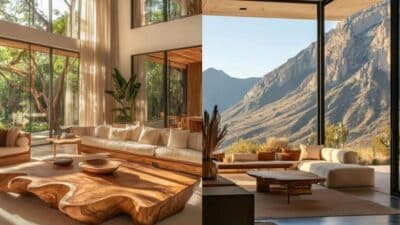Did you know that over 70 percent of homeowners say art is the most important element in making a house feel like home? The presence and placement of art go far beyond simple decoration, shaping how we feel and connect with our daily environment. From supporting emotional well-being to revealing personal identity, the art you select can quietly transform any room into a space that truly reflects who you are.
Key Takeaways
| Point | Details |
|---|---|
| Art as Personal Narrative | Art transforms living spaces into personal narratives, reflecting individual experiences and emotional landscapes. |
| Psychological Impact of Art | Thoughtfully selected artwork can influence emotions, enhance well-being, and shape the atmosphere of a space. |
| Harmonious Art Integration | Successful art integration requires alignment with design principles, creating a cohesive relationship between art and interior elements. |
| Strategic Art Budgeting | Art budgeting should prioritize impactful choices over cost, emphasizing emotional resonance and personal connection rather than just monetary value. |
Table of Contents
- Defining The Role Of Art At Home
- Types Of Art Commonly Used Indoors
- How Art Shapes Mood And Behavior
- Integrating Art With Interior Design
- Common Pitfalls When Using Art
- Budgeting For Art In Living Spaces
Defining the Role of Art at Home
Art transcends mere visual decoration—it’s a powerful psychological catalyst that transforms living spaces from ordinary rooms into deeply personal narratives. Emotional environments are crafted through strategic art placement, turning walls into storytelling canvases that reflect individual experiences, memories, and inner worlds.
According to insights from Design Times, art in modern interior design serves critical functions beyond aesthetics:
- Acts as a focal point that guides visual attention
- Communicates personal identity
- Transforms ordinary areas into inviting environments
Moreover, the psychological impact of art goes far deeper than visual appeal. Research on wall art reveals fascinating neurological connections, demonstrating that art engages complex brain networks associated with:
- Emotional processing
- Introspection
- Psychological reward mechanisms
Interestingly, art’s influence extends beyond aesthetic pleasure. In healthcare settings, studies have shown that thoughtfully selected artwork can measurably reduce stress markers, including heart rate and blood pressure. This underscores art’s profound ability to shape not just physical spaces, but our internal emotional landscapes.
Ultimately, art at home is less about filling empty walls and more about creating living environments that breathe, feel, and tell your unique story. Each piece becomes a silent narrator, transforming rooms from mere structural spaces into deeply personal sanctuaries of self-expression.
Types of Art Commonly Used Indoors
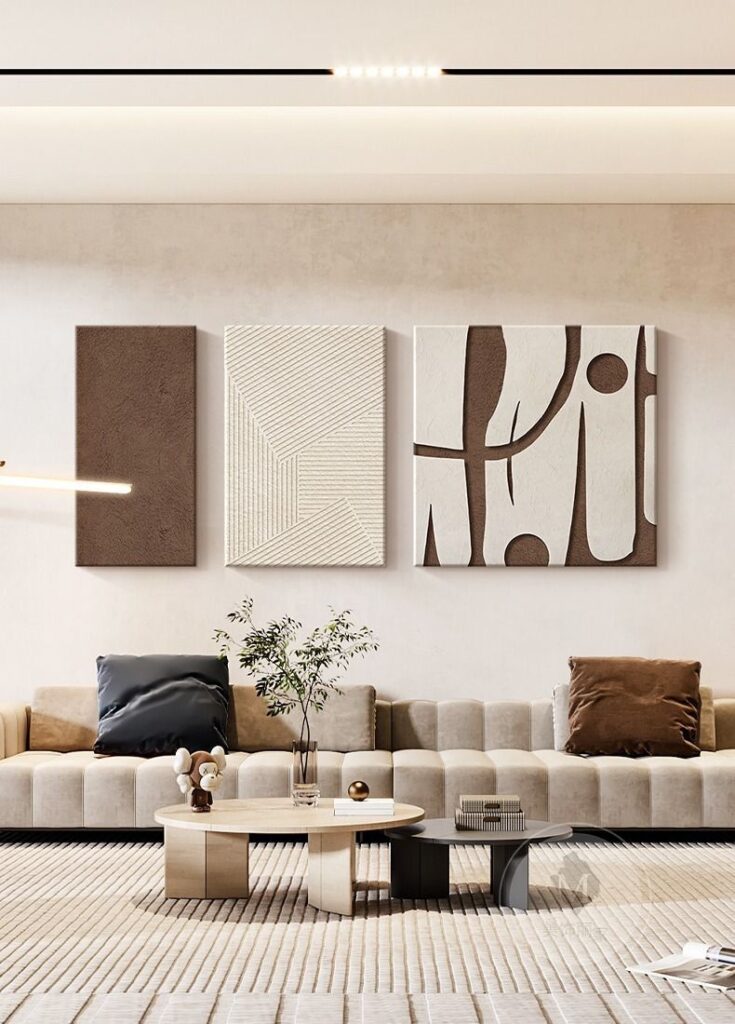
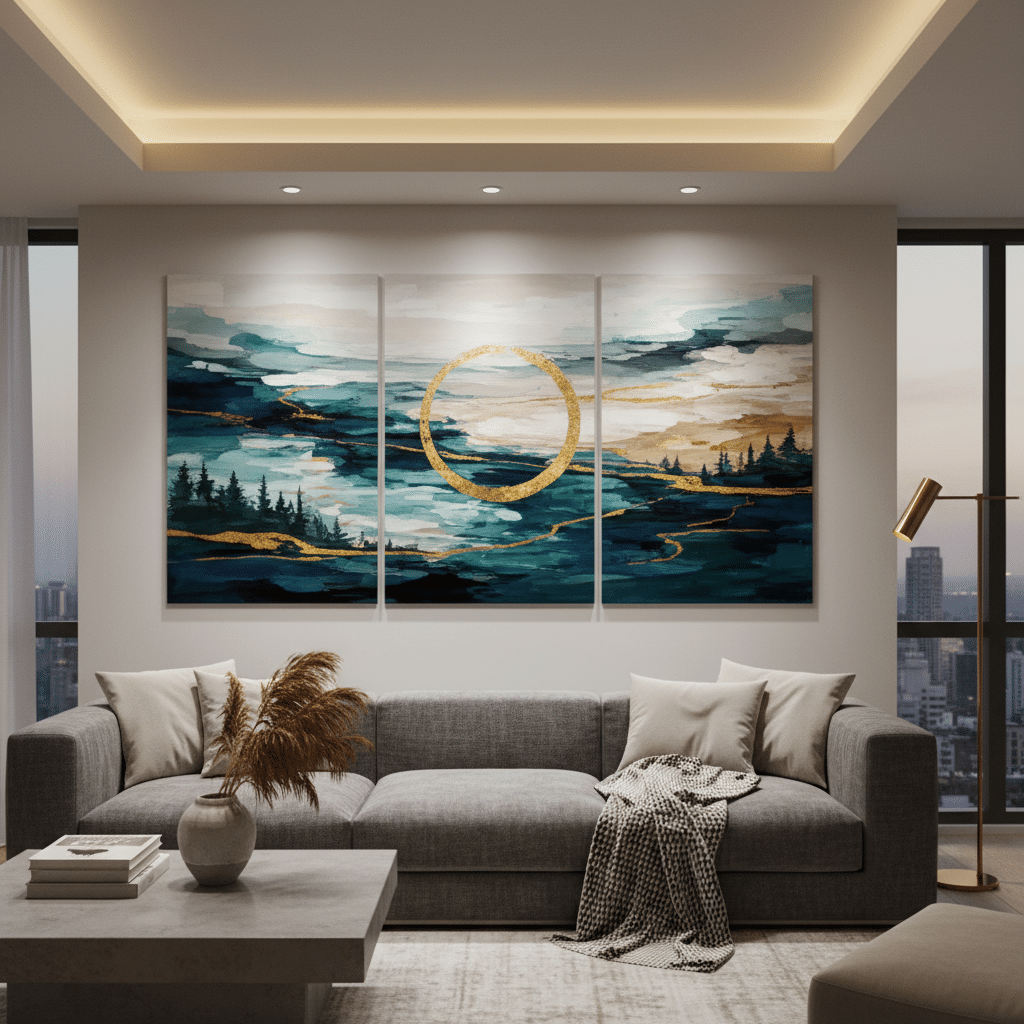
Indoor art is a vibrant spectrum of creative expressions, each type bringing its unique character and emotional resonance to living spaces. Paintings stand at the forefront of interior art, offering an expansive range of styles that can dramatically transform a room’s atmosphere. From bold abstract compositions that inject energy and movement to serene landscape scenes that invite tranquility, paintings serve as powerful visual storytellers.
According to Design Times, the most common types of indoor art include:
- Paintings (abstract, portraits, landscapes)
- Sculptures
- Photography
- Decorative objects
Sculptures provide a three-dimensional dynamic that paintings cannot, adding depth and texture to interior spaces. These can range from sleek, minimalist metal pieces that complement modern decors to intricate ceramic works that create warm, organic focal points. Sculptures invite touch and interaction, breaking the two-dimensional plane and creating visual intrigue.
Photography has emerged as a sophisticated art form in interior design, offering incredible versatility. Black and white portraits can create dramatic statements, while nature photography can bring the outside world into your living space. Photographic art allows for personal storytelling—whether it’s a cherished travel memory or a stunning landscape that resonates with your inner world.
Decorative objects represent another crucial art category, bridging the gap between functional design and artistic expression. These might include handcrafted ceramics, artisan glasswork, or curated collectibles that reflect personal journeys and aesthetic sensibilities. Each piece becomes more than decoration—it’s a conversation starter, a memory keeper, a fragment of personal narrative carefully integrated into your living environment.

How Art Shapes Mood and Behavior
Art is far more than a visual accessory—it’s a powerful psychological tool that directly influences our emotional landscape and behavioral patterns. Emotional architecture emerges through carefully selected artworks that can subtly manipulate our psychological state, creating environments that either calm or energize our internal experience.
According to research from Stelava, the patterns and shapes within art profoundly impact our emotional responses:
- Flowing, soft patterns create calm ‘zen’ vibes
- Bold, angular designs generate energy and excitement
- Repeating motifs produce rhythmic psychological responses
- Color palettes direct mood between relaxation and stimulation
The color psychology of art plays a crucial role in behavioral modification. Warm tones like reds and oranges can stimulate conversation and create dynamic social spaces, while cool blues and greens induce tranquility and introspection. Chromatic experiences become invisible architects of our emotional environments, silently guiding our psychological states without direct verbal communication.
Beyond visual aesthetics, art serves as a form of non-verbal communication that reflects personal identity and creates psychological anchors within living spaces. A carefully curated art collection becomes a mirror of internal landscapes—telling stories, preserving memories, and creating emotional resonance that transforms simple rooms into deeply personal sanctuaries. The art we choose speaks volumes about our inner worlds, acting as silent storytellers that shape not just our physical surroundings, but our very perception of self and space.
Integrating Art With Interior Design
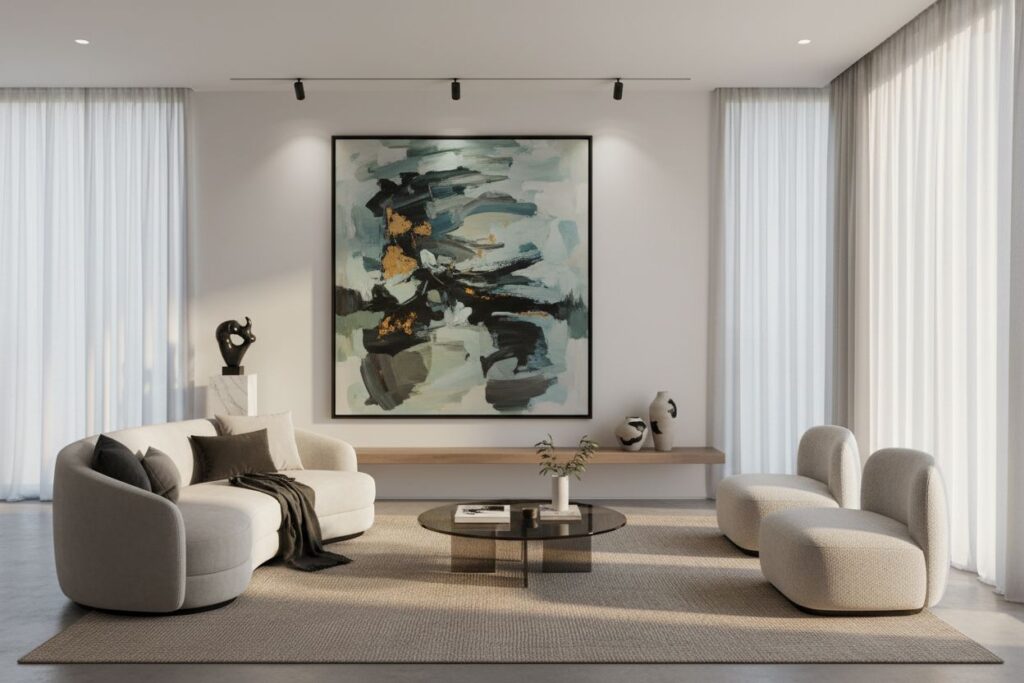
Art integration is a delicate dance of visual storytelling, where design philosophy meets personal expression. The magic happens when art becomes more than decoration—it transforms into a fundamental element of spatial design, creating narratives that extend beyond mere visual appeal. Architectural context plays a crucial role, with each artwork carefully selected to complement and enhance the surrounding environment.
According to About Wall Art, successful art integration involves aligning artistic elements with specific design movements and architectural styles:
- Arts & Crafts aesthetic
- Bauhaus minimalism
- Art Deco sophistication
- Contemporary minimalist approaches
Design Times reveals that professional designers approach art integration as a nuanced process of personal storytelling. They meticulously assess clients’ tastes, selecting pieces that not only reflect individual identity but also create specific emotional atmospheres. This approach transforms spaces from simple rooms into curated experiences that speak volumes about the inhabitants.
The art of integration goes beyond visual matching—it’s about creating harmonious dialogues between architectural elements and artistic expressions. Texture, color, scale, and emotional resonance all play critical roles. For instance, a minimalist space might feature a bold, vibrant piece that provides visual contrast, while a more ornate room could benefit from subtle, understated artwork that doesn’t compete with architectural details. Check out our guide on mixing design styles to understand how to balance these complex visual relationships.
Ultimately, integrating art with interior design is an intimate process of translation—transforming blank spaces into living canvases that breathe, feel, and tell stories. It’s about creating environments that are not just seen, but deeply experienced.
Common Pitfalls When Using Art
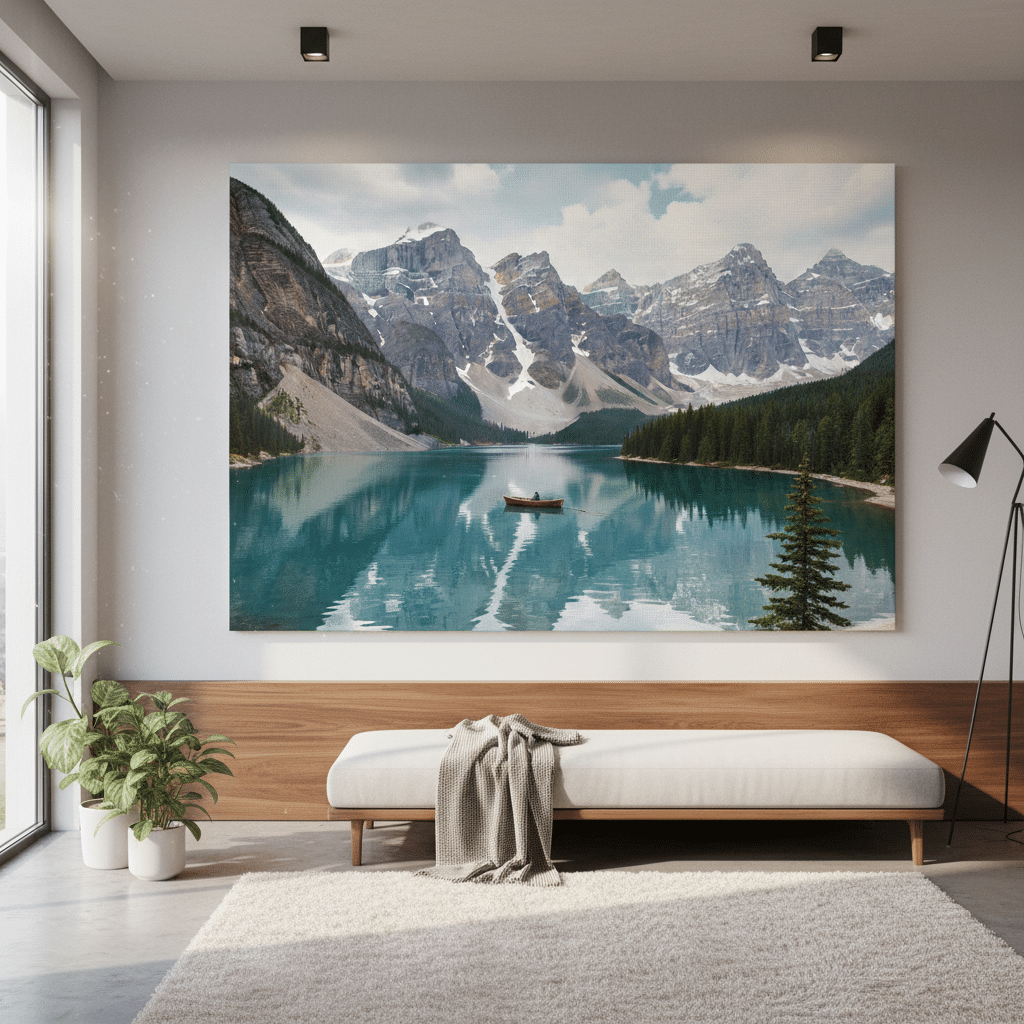
Art selection is a nuanced process that goes far beyond simply hanging something pretty on a wall. Emotional resonance requires thoughtful consideration, as the wrong piece can completely disrupt the intended atmosphere of a space. Like an orchestra where each instrument must harmonize, art must synchronize with the room’s underlying emotional and visual composition.
According to Stelava’s research, one of the most significant pitfalls is creating mood dissonance through inappropriate art choices:
- Using jagged patterns in calm spaces
- Selecting overly busy artwork for relaxation zones
- Implementing soft, pastel pieces in high-energy social areas
- Creating unintentional emotional overstimulation
Financial planning presents another critical challenge. Dynamic IF highlights that many design enthusiasts underestimate the importance of budgeting for art as the final design layer. This oversight can result in incomplete, impersonal spaces that lack the nuanced finishing touch that transforms a room from merely decorated to truly curated.
Technical considerations also play a crucial role. Scale, proportion, and placement can make or break an art installation. A tiny painting lost on a massive wall creates visual confusion, while an oversized piece can overwhelm a compact space. Balance is key—art should command attention without dominating the room’s overall design narrative. When in doubt, learn more about mixing design styles to understand how to create visual harmony.
Ultimately, avoiding art pitfalls requires a combination of emotional intelligence, design awareness, and personal authenticity. Art is not just decoration—it’s a conversation, a mood, a statement. Choose wisely, and your walls will whisper stories that resonate deeply with both inhabitants and guests.
Budgeting for Art in Living Spaces
Art budgeting is less about strict financial constraints and more about strategic investment in your living environment. Financial creativity means understanding that transformative art doesn’t always require astronomical spending—it’s about making intelligent choices that maximize visual and emotional impact.
According to Dynamic IF, design budget guidelines suggest allocating resources strategically:
- 7–10% of home value for mid-range projects
- Up to 20–25% for luxury design implementations
- 5–10% reserved for miscellaneous styling elements
- 15–20% contingency for unexpected art and design updates
Carla Bast’s design recommendations emphasize a layered approach to art integration. Prioritize core structural elements first—furniture and lighting—then gradually introduce art pieces that inject personality. This method allows for more thoughtful, less impulsive spending. Mixing vintage or secondhand art finds can achieve a high-end aesthetic without draining your budget, transforming spaces with unique, character-rich pieces.
Smart art budgeting also involves understanding value beyond price tags. Consider exploring budget-friendly design strategies that help you curate meaningful collections without financial strain. Emerging artists, local galleries, and online platforms offer incredible opportunities to acquire original artwork at accessible price points. Remember: the most powerful art pieces are those that resonate emotionally, not those with the highest price tags.
Ultimately, art budgeting is a personal journey of balancing financial practicality with creative expression. Your walls are canvases waiting to tell your unique story—and that narrative doesn’t have a fixed price point.
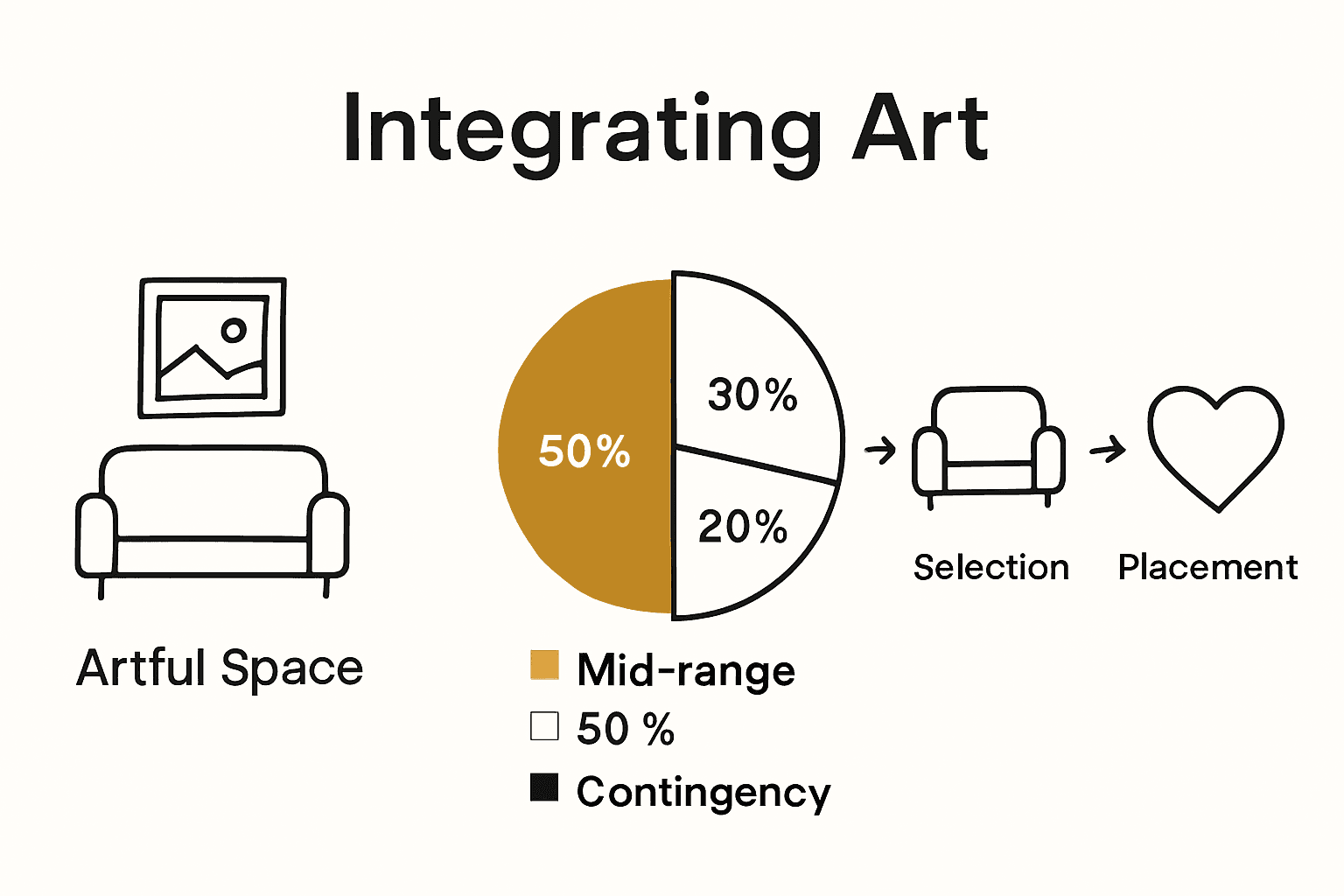
Transform Your Space with Expert Art Inspiration
Are you struggling to choose art that truly reflects your personality and transforms your living spaces? Many readers of the “Complete Guide to the Role of Art in Living Spaces” feel unsure about creating emotional environments that go beyond simple decoration. You might wonder if your art choices create the calm or energy you desire, or worry about finding affordable pieces that feel authentic. If you want your rooms to tell your story and avoid common pitfalls like mood dissonance or misaligned design, Skyrye Design is here for you.
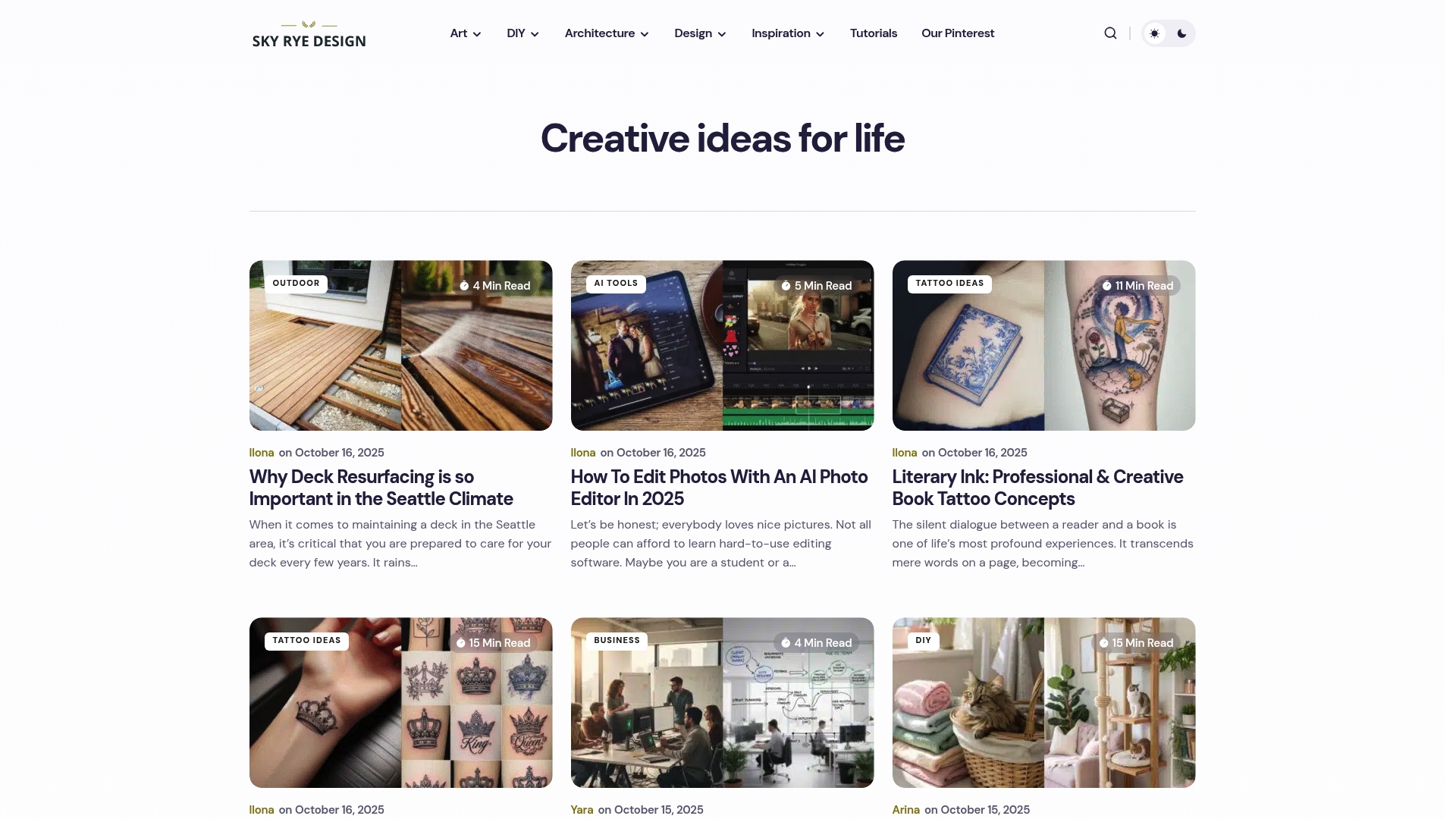
Explore practical guides, creative ideas, and budget-friendly tips crafted to address every stage of your art journey. Find the perfect balance between aesthetics and personal expression with our expert articles. Start building a home that feels truly yours at https://skyryedesign.com and discover specific strategies for mixing design styles and budget-friendly design solutions. Visit now and unlock fresh inspiration to make your walls come alive.
Frequently Asked Questions
What is the importance of art in living spaces?
Art plays a crucial role in transforming living spaces by enhancing emotional environments, reflecting personal identity, and communicating individual narratives. It goes beyond aesthetics to create inviting and meaningful experiences.
How can art influence mood and behavior in a home?
Art can shape mood and behavior by impacting emotional landscapes through carefully selected pieces. Different patterns, shapes, and colors can evoke feelings of calm or energy, ultimately influencing the psychological state of individuals in the space.
What types of art are commonly used for interior design?
Common types of art used in interior design include paintings (such as abstract or landscape), sculptures, photography, and decorative objects. Each type offers unique attributes and emotional resonances to enhance a living space.
What are some common pitfalls to avoid when selecting art for a home?
Common pitfalls include choosing art that disrupts the intended atmosphere, neglecting proper scale and placement, and failing to budget appropriately for art investments. It’s crucial to ensure that art harmonizes with the room’s emotional and visual composition.
Recommended
- paintings | Sky Rye Design
- home decoration | Sky Rye Design
- Budgeting | Sky Rye Design
- wall art | Sky Rye Design
- 29shares
- Facebook0
- Pinterest29
- Twitter0


